Beets 101: Everything You Need to Know
It's time for a closer look at beets. These nutrition powerhouses are fantastic sources of nutrients and fiber. Plus, they're very versatile, especially when it comes to cooking. It's easier to incorporate them into a balanced diet than you might think, especially with a little know-how. So let's dive in to Beet 101!Beet Types:Red beets are perhaps the most well-known type of beet. They are also called table beets or garden beets. Their deep wine color and sweet, earthy flavor make them an indispensable part of many culinary endeavors. When you're looking to incorporate more beets into your diet, red beets are a great place to start.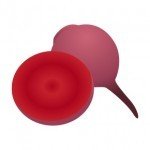 Golden beets have a milder flavor than red beets, and their skin is so thin that you often don't have to peel them before cooking. Since peeling can be a messy and time-consuming step in beet preparation, golden beets are great alternatives for people who are in a rush to get a meal on the table.
Golden beets have a milder flavor than red beets, and their skin is so thin that you often don't have to peel them before cooking. Since peeling can be a messy and time-consuming step in beet preparation, golden beets are great alternatives for people who are in a rush to get a meal on the table.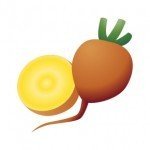 Candy cane beets, also known as Chiogga beets, look just like a peppermint stick. Their alternating rings of white and red add a festive flair to any salad or crudité plate, but beware! Their striations disappear when the beets are cooked, leaving a warm pink wash of color throughout.
Candy cane beets, also known as Chiogga beets, look just like a peppermint stick. Their alternating rings of white and red add a festive flair to any salad or crudité plate, but beware! Their striations disappear when the beets are cooked, leaving a warm pink wash of color throughout. Cylindra beets grow into long and thin cylindrical beets, which makes them easier to slice than their round cousins. This heirloom variety of beet can be found at many farmer's markets and stands, but it can be harder to track down in a grocery store.
Cylindra beets grow into long and thin cylindrical beets, which makes them easier to slice than their round cousins. This heirloom variety of beet can be found at many farmer's markets and stands, but it can be harder to track down in a grocery store.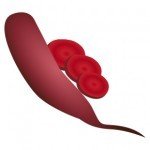 Beet greens are what people call the leafy tops of the beet plant. Many people simply toss them in the garbage before preparing the beets, but these greens are actually great for your health. In fact, beet greens have been classified as "nutrient powerhouses" in the article Defining Powerhouse Fruits and Vegetables: A Nutrient Density Approach, earning a nutrient density score of 87 -- one of the highest in its category. Packed with nutrients and fiber, beet greens are super tasty when sautéed, shredded, or blended into smoothies.
Beet greens are what people call the leafy tops of the beet plant. Many people simply toss them in the garbage before preparing the beets, but these greens are actually great for your health. In fact, beet greens have been classified as "nutrient powerhouses" in the article Defining Powerhouse Fruits and Vegetables: A Nutrient Density Approach, earning a nutrient density score of 87 -- one of the highest in its category. Packed with nutrients and fiber, beet greens are super tasty when sautéed, shredded, or blended into smoothies.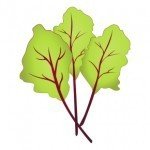 Sugar beets aren't grown for vegetable consumption. Instead, these large, white beets are processed to make table sugar and animal feed. Sugar beets are some of the largest beets you can find, with diameters of 6 inches or more!
Sugar beets aren't grown for vegetable consumption. Instead, these large, white beets are processed to make table sugar and animal feed. Sugar beets are some of the largest beets you can find, with diameters of 6 inches or more!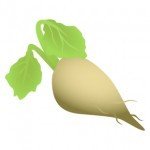 Nutrient Content:Now that we've looked at the basic types of beets, it's time to delve deeper into their nutrient content. Beets are nutrient powerhouses, and a single cup of chopped beets* includes...
Nutrient Content:Now that we've looked at the basic types of beets, it's time to delve deeper into their nutrient content. Beets are nutrient powerhouses, and a single cup of chopped beets* includes...
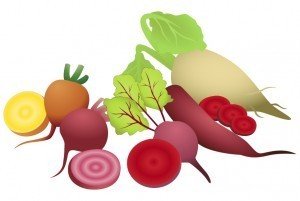 37% of your daily value (DV) of folate
37% of your daily value (DV) of folate- 22% DV manganese
- 15% DV fiber
- 13% DV potassium
- 11% DV vitamin C
- 8% DV magnesium
- 6% DV iron
The dietary nitrates in beets may also have blood-pressure (BP) lowering qualities, which is great news for your health. According to the study, Acute blood pressure lowering, vasoprotective and anti-platelet properties of dietary nitrate via bioconversion to nitrite,
"Beetroot juice ingestion lowered BP in healthy volunteers. There was a lag period of approximately 1-2h, following ingestion, with a peak drop in BP occurring after 3-4 h. […] Exactly how nitrite mediates this decrease in BP is uncertain however, recent evidence demonstrates that nitrite is a potent vasodilator in the human forearm, and it is likely that such vasodilator activity underlies the BP effects evidenced here."
Since high blood pressure has been linked to a dramatically increased risk of heart disease, heart attack, hardening artery walls (atherosclerosis), stoke, kidney damage, and even blindness, finding ways to get your blood pressure under control is vital to your health. And now it looks like beets can help with that. The antioxidants in beets are also great for your health. The study, Betalains—a new class of dietary cat ionized antioxidants, explored the effects of betalains, a potent antioxidant in beets. The authors found that "Red beet products used regularly in the diet may provide protection against certain oxidative stress-related disorders in humans." What great news!But wait, there's more!Beets have made their way onto the World's Healthiest (WH) Foods list as well. According to WH Foods,
The antioxidants in beets are also great for your health. The study, Betalains—a new class of dietary cat ionized antioxidants, explored the effects of betalains, a potent antioxidant in beets. The authors found that "Red beet products used regularly in the diet may provide protection against certain oxidative stress-related disorders in humans." What great news!But wait, there's more!Beets have made their way onto the World's Healthiest (WH) Foods list as well. According to WH Foods,
"It’s important to note two other areas of potential health benefits associated with beets: anti-cancer benefits and fiber-related benefits. The combination of antioxidant and anti-inflammatory molecules in beets makes this food a highly-likely candidate for risk reduction of many cancer types. Lab studies on human tumor cells have confirmed this possibility for colon, stomach, nerve, lung, breast, prostate and testicular cancers."
 The study, Chemoprevention of lung and skin cancer by Beta vulgarism (beet) root extract, supports these claims, asserting "The in vitro inhibitory effect of Beta vulgarism (beet) root extract […] revealed a high order of activity […]. An in vivo anti-tumor promoting activity evaluation […] also revealed a significant tumor inhibitory effect. The combined findings suggest that beetroot ingestion can be one of the useful means to prevent cancer." This is not the only study to link beets and cancer prevention. It's also worth exploring the results from Cytotoxic effect of the red beetroot (Beta vulgarism L.) extract compared to doxorubicin (Adriamycin) in the human prostate (PC-3) and breast (MCF-7) cancer cell lines, which maintains, "Previous cancer chemoprevention studies from our laboratories and by other investigators have demonstrated that the extract of red beetroot (Beta vulgarism L.), the FDA approved red food color E162, can be effective in suppressing the development of multi-organ tumors in experimental animals." The authors further assert, "The results suggest that betanin, the major betacyanin constituent, may play an important role in the cytotoxicity exhibited by the red beetroot extract."Whew! That was a big research rundown. Do you see how awesome beets can be for your health?Ways to Prepare Beets:Now we've come to my favorite part -- ways to incorporate beets into your diet. I've been cooking with beets for years, and they're a real favorite in my test kitchen. Which is great news for you, because it means that I have tons of great beet recipes for you.
The study, Chemoprevention of lung and skin cancer by Beta vulgarism (beet) root extract, supports these claims, asserting "The in vitro inhibitory effect of Beta vulgarism (beet) root extract […] revealed a high order of activity […]. An in vivo anti-tumor promoting activity evaluation […] also revealed a significant tumor inhibitory effect. The combined findings suggest that beetroot ingestion can be one of the useful means to prevent cancer." This is not the only study to link beets and cancer prevention. It's also worth exploring the results from Cytotoxic effect of the red beetroot (Beta vulgarism L.) extract compared to doxorubicin (Adriamycin) in the human prostate (PC-3) and breast (MCF-7) cancer cell lines, which maintains, "Previous cancer chemoprevention studies from our laboratories and by other investigators have demonstrated that the extract of red beetroot (Beta vulgarism L.), the FDA approved red food color E162, can be effective in suppressing the development of multi-organ tumors in experimental animals." The authors further assert, "The results suggest that betanin, the major betacyanin constituent, may play an important role in the cytotoxicity exhibited by the red beetroot extract."Whew! That was a big research rundown. Do you see how awesome beets can be for your health?Ways to Prepare Beets:Now we've come to my favorite part -- ways to incorporate beets into your diet. I've been cooking with beets for years, and they're a real favorite in my test kitchen. Which is great news for you, because it means that I have tons of great beet recipes for you.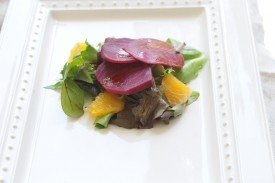 There are lots of ways to prepare beets. For a fast beet fix, toss canned beets into a salad. Many supermarkets have containers of freshly steamed and peeled beets that are also great for salads and pasta dishes. If you're down for a bit of prep, you could also roast beets in foil -- they're delicious! Another great culinary use is to shred raw beets into salad or slice them very thinly into vegetable carpaccio. Beets are also tasty in soups, adding bright color and a rich depth of flavor.Here is a rundown of some of my favorite beet recipes. Which will you make first?
There are lots of ways to prepare beets. For a fast beet fix, toss canned beets into a salad. Many supermarkets have containers of freshly steamed and peeled beets that are also great for salads and pasta dishes. If you're down for a bit of prep, you could also roast beets in foil -- they're delicious! Another great culinary use is to shred raw beets into salad or slice them very thinly into vegetable carpaccio. Beets are also tasty in soups, adding bright color and a rich depth of flavor.Here is a rundown of some of my favorite beet recipes. Which will you make first?
 Beet, Orange, and Greens Salad
Beet, Orange, and Greens Salad- Beet Lasagna
- Beet Rice
- Chocolate Beet Cake
- Indigo Beet Salad
- Quick and Creamy Beet Soup
- Raspberry Beet Cheesecake (a reader favorite!)
- Red Slaw
- Ruby and Gold Beet Salad
- Vegetarian Carpaccio
And now, for our grand finale, here is a free beet infographic! Add it to your newsletters, email blasts, displays, and handouts today -- it's all yours!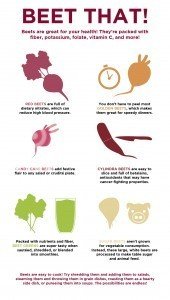 Don't miss these great materials from the Nutrition Education Store! Remember, we're here to help you look your very best!
Don't miss these great materials from the Nutrition Education Store! Remember, we're here to help you look your very best!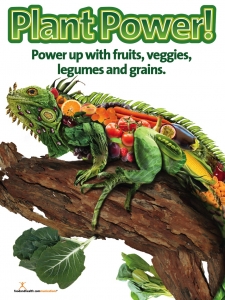
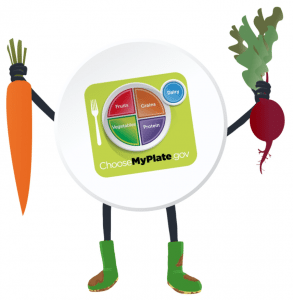
 * Data from http://nutritiondata.self.com/facts/vegetables-and-vegetable-products/2348/2
* Data from http://nutritiondata.self.com/facts/vegetables-and-vegetable-products/2348/2